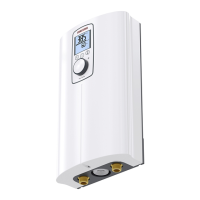
Do you have a question about the STIEBEL ELTRON DCE 10 Premium and is the answer not in the manual?
| Type | Instantaneous Water Heater |
|---|---|
| Voltage | 400 V |
| Phases | 3 |
| Frequency | 50 Hz |
| Temperature Range | 30 - 60 °C |
| Protection Class | IP25 |
| Energy Efficiency Class | A |
| Maximum Pressure | 10 bar |
Covers user capabilities, children's use, general warnings, and environmental precautions.
Details electrical safety, GFCI protection, grounding, wiring, and voltage matching requirements.
Covers installation site, water types, pressure limits, and general installation precautions.
Explains the structure, symbols, and keywords used in safety instructions.
Details other symbols used in documentation and units of measurement.
Covers intended use and general safety instructions including burn risks.
Covers installation precautions, user safety, environmental concerns, and operational details.
Details test symbols and licenses/certificates applicable to the water heater.
Identifies and describes the physical components of the water heater's user interface.
Explains the display layout, elements, and general menu navigation structure.
Describes how to interact with the unit using buttons and the control knob.
Details the base display, capacity bar, flow rate, and how to adjust the temperature setpoint.
Explains accessing the information menu and viewing accumulated cost savings.
Covers accessing the parameters menu and setting the Tmax temperature limiter.
Covers changing display units for temperature (Celsius/Fahrenheit) and volume flow (l/min/gpm).
Details enabling display lock and configuring electricity cost for energy savings calculation.
Explains resetting settings to factory defaults and resetting accumulated savings data.
Covers setting and changing temperature presets for quick access.
Details adjusting display backlight timeout and brightness levels.
Explains returning to the base display and interpreting error messages.
Provides recommended settings for energy saving, showers, and kitchens, plus anti-scalding protection.
Details the procedure to restart the unit after a water supply interruption to prevent damage.
Covers cleaning the unit with a damp cloth and maintaining taps for limescale.
Covers qualified installer requirements, safety warnings, and compliance with standards.
Details installation site requirements, standard delivery items, and available accessories.
Covers minimum clearances, water connection cautions, electrical requirements, and material warnings.
Identifies water inlet/outlet ports and explains the function of the filter screen.
Specifies acceptable connection materials and minimum activation flow rate requirements.
Guides through cover removal, power cable preparation, mounting, and water connections.
Covers electrocution warnings, GFCI, grounding, voltage matching, and specific model requirements.
Details setting anti-scalding protection via jumper and selecting power output.
Covers critical initial startup steps like air purging and engaging the AE3 safety switch.
Covers explaining functions to users and operating the unit with preheated water.
Details recommissioning after interruption and standard water heater shutdown steps.
Introduces alternative installation methods, focusing on concealed electrical connection.
Guides on using short power cables and making side electrical connections.
Details concealed installation from above and concealed water connections.
Covers removing and installing the function module and mounting the water heater.
Identifies key internal components of the water heater.
Explains diagnostic lights and common error codes (E1, E2, E3) for fault identification.
Addresses common issues like no heat, no DHW, display errors, and temperature discrepancies.
Covers the process of draining the unit for maintenance, including safety warnings.
Details how to clean the filter screen for both standard and concealed installations.
Provides physical dimensions and identifies connection ports for installation.
Illustrates the wiring and identifies key electrical components for installation.
Details hot water output based on voltage, power, and inlet temperature.
Provides detailed tables for DHW output at different temperatures and flow rates.
Covers electrical properties, application areas, and pipework sizing recommendations.
Alerts users to potential high temperatures and pressures during fault states.
Details electrical specifications, connection types, and operational limits.
Lists performance values like capacity, activation rate, and version-specific features.
Details the warranty period, coverage, exclusions, and conditions for the water heater.
Covers installer responsibilities, company liability, and proper disposal of packaging.
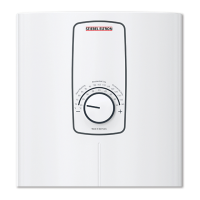
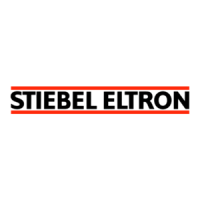

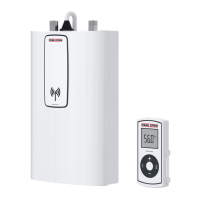

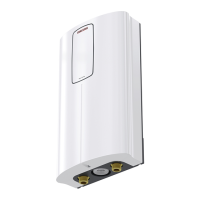


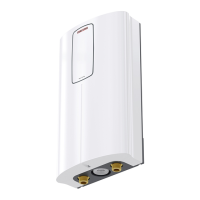
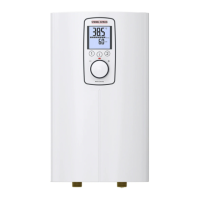


